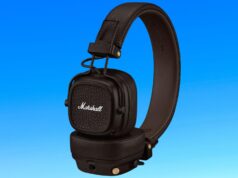Pros
- Extremely portable with hybrid design
- Great performance for casual gaming
- Superb screen quality
- Option to boost performance with eGPU
Cons
- Poor battery life undermines portability
- Optional eGPU is very expensive
- Type cover is a poor gaming keyboard replacement
The Asus ROG Flow Z13 is one of the first, and only, tablets designed to offer a full-fat PC gaming experience that isn’t reliant on a cloud service such as GeForce Now.
Out of the box, however, the tablet doesn’t scream gaming, with the black slate being blissfully free of any RGB lighting. In fact, our reviewer described the Windows tablet as looking a lot like a first-generation Microsoft Surface Pro, featuring a rugged but chunky tablet section with a reliable kickstand, which could easily see the device used in a lecture hall or coffee shop without drawing too much attention.
Like all the Microsoft Windows tablets we test, the device is clearly designed to be used as a laptop first and tablet second. The kickstand and attachable keyboard, coupled with its large dimensions, make it a lot less comfortable to hold and use in landscape orientation than most Android or Apple iPad rivals.
However, if a mobile PC gaming tablet that can double as a laptop for basic office tasks is what you’re after, it’s an excellent choice.
The big differentiator between the Asus ROG Flow Z13 and the sea of other Windows tablets, including Microsoft’s current Surface Pro 8, is the fact that it comes with a dGPU option. Specifically, the review unit we tested was powered by an Intel Core i9-12900H CPU and an Nvidia RTX 3050 Ti GPU. There’s also a cheaper version available, which comes with a less powerful Intel Core i5-12500H and Intel Iris Xe graphics.
The 3050 Ti GPU is a rarity – we haven’t seen it in any other tablet – and a clear sign of the tablet’s gaming focus, as well as the primary reason for its increased size.
During testing, the combo saw the ROG Flow Z13 play games at surprisingly high frame rates. We managed to get big-name titles including Borderlands 3, Dirt Rally and Horizon Zero Dawn running at playable rates post-30fps, with the tablet set to a 1080p resolution during our time with the device. Less demanding titles, such as Fortnite and Apex Legends, ran much smoother and at times approached 60fps, again with graphics settings lowered. As a rule of thumb, games need to run at 30fps or higher – any lower and it will look like it’s chugging.
As an added bonus the Z13 also has an external GPU option. This is an expensive peripheral that lets you radically boost game performance by connecting the Asus ROG Flow Z13 to an external XG Mobile dock containing a much more powerful RTX 3080 graphics card. Our tests showed the connection led to three times better performance when gaming.
The only downside to the device is its high upfront cost, and the fact that some sacrifices have had to be made to accommodate the 3050 Ti graphics card. For starters, the keyboard isn’t as comfortable to use as the Type Cover available for the Surface Pro 8. In tests we found the Asus keyboard felt cramped, with its keys failing to offer as tactile feedback as the Surface’s keyboard – which itself isn’t perfect.
The added graphical grunt also heavily impacted battery life. During our time with the Asus ROG Flow Z13, it never once managed to last more than five hours running productivity applications, and its battery would die in less than two hours while lightweight gaming. This is radically behind competing devices such as the Surface Pro 8, which managed to last a full work day (eight hours) when tested.
We’d also suggest that any buyers simply looking for a way to play PC games on-the-go consider the Valve Steam Deck. In tests we found the Steam Deck, which comes with attached gamepad controls, managed to match the Asus ROG Flow Z13’s performance and offered longer battery life. The only downside is that it can’t be used as a laptop replacement in the same way as the Asus.
Reviewer: Ryan Jones
Full review: Asus ROG Flow Z13 Review











